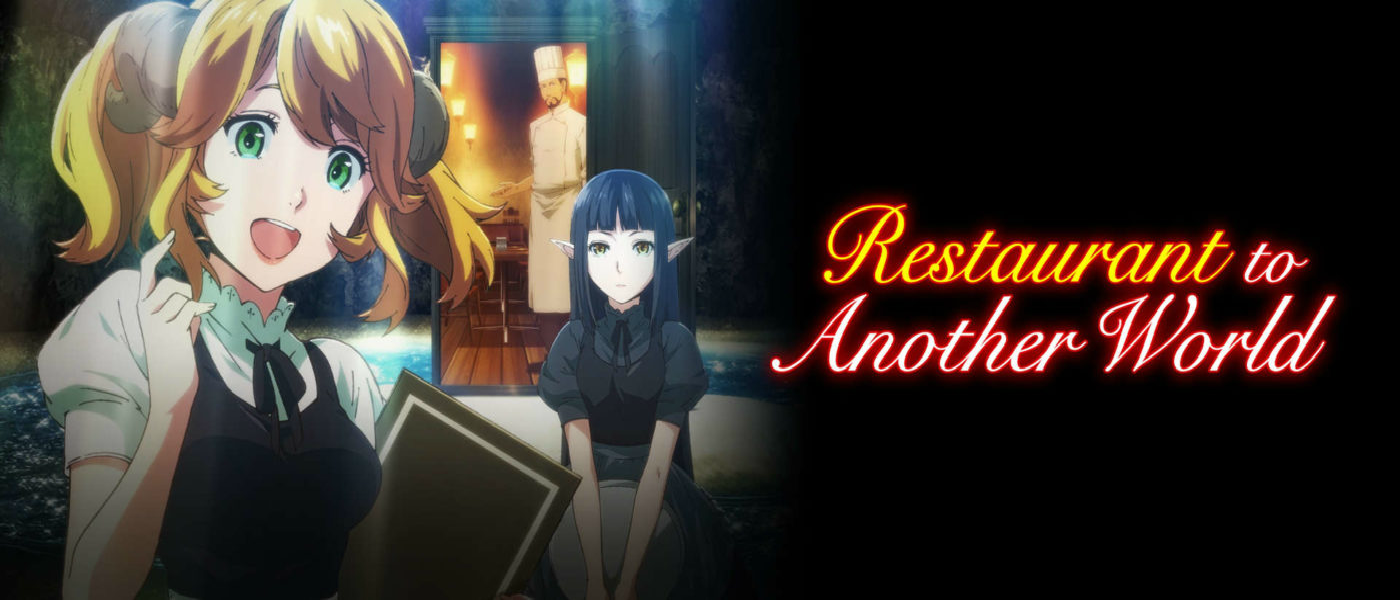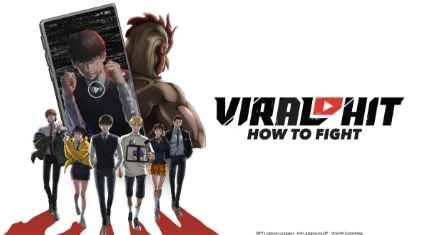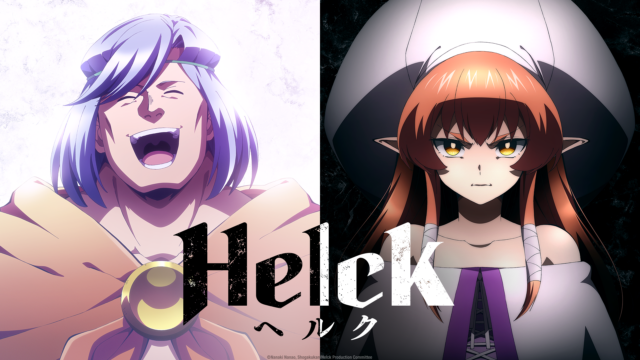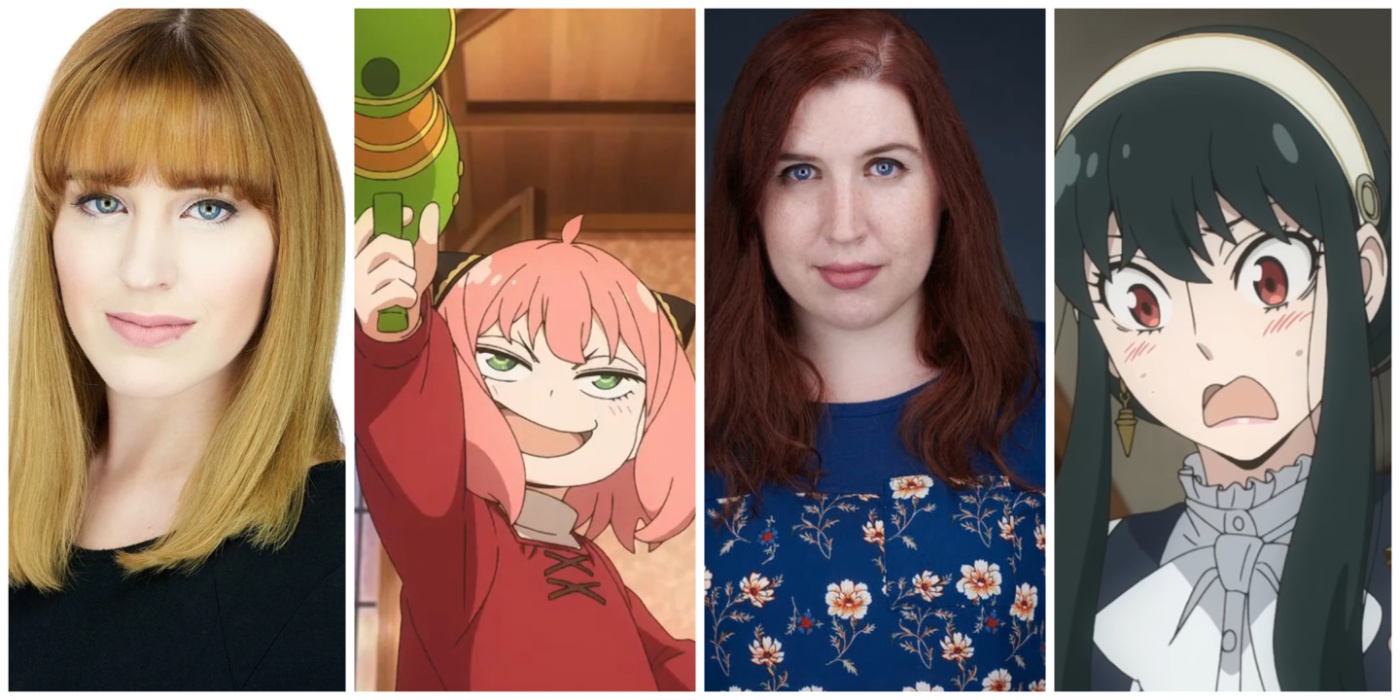English Dub Series Review: Restaurant to Another World
A mysterious door that leads to a whole new realm of munchies.
Overview (Spoilers, but it won’t really matter)
Welcome to the Nekoya, what the Japanese call a Youkoshu (Western Restaurant, in that it sells European and American cuisine). Most of the week, it’s an ordinary restaurant. But, when it opens its doors on Saturday, the front door leads to doors hidden all over a completely different universe. One where dragons are worshiped as gods, beastmen fight in gladiatorial arenas and adventurers become legendary. However, the Nekoya has one thing their world does not… Amazing edibles. The Master (the only name we are ever given to call the dude) studied how to cook from some of the best, and cooking is his greatest passion in life. In fact, his proceeds go to procuring foods from the other world, just so he knows how he can improve his dishes to suit their tastes.

One day, he comes down to start work, when he finds that a little “demon girl” named Aletta has wandered in, and ate a whole pot of food. Realizing the poor thing was starving, he offers her a job as a waitress, and in the process, changes her life for the better. Later, she is joined as a waitress by Kuro, a girl who looks like an elf but is really an ancient dragon/god of death who loves curry. The shop is frequented by an array of colorful characters. A samurai, a few princesses, some fairies, and a lion man, just to name a few. Each of them has their own stories to tell. As you watch their stories unfold, a vast and imaginative world reveals itself before you. As the setting and history become plain, you begin to see how all of the patrons are connected, even the Master, by invisible threads.
Our Take
This show has some beautiful art and amazing world-building. I swear, I had to be sure I ate something every time I watched this show, or I ended up getting hungry after every episode. The depictions of the food are enticing, and the animation showcases the little details that you might not always notice about your meals. Those little details go a long way to making these drawn representations of food turn mouth watering. Steam, the way the sauce moves, even the sticky, stringy slime on the natto.
Then, you have the other world. At first, it seems like your average D&D high-fantasy realm. As the show continues, you get to see increasingly exotic locales and hear about the cultures therein. Some episodes play out like a Discovery Channel special or Nat Geo, while others have portions that are more biographical in nature. One way or the other, twice per episode, someone comes into the Nekoya, and orders a dish we haven’t seen before. They react with astonishment at the establishment, but when the food comes, they launch into a monologue of how it tastes, and what kinds of textures it has, and how this mixes with that… They get very excited. It’s a foodgasm. Now, unlike other cooking anime, this makes total sense. The characters have never had this food before, and if they have, they haven’t had it this good. Our world’s cooking techniques are light years ahead of theirs. It makes sense that they are this blown away by the taste. This show is all about the joy of discovering your new favorite dish.
Unfortunately, its formula gets old, and it gets old fast. Twice per episode, someone new. While this formula gives us a broad view of their world and the people in it, the show is as flat as crepes. You never learn the owner’s name. You learn his grandfather’s name. His grandfather is dead. You learn his grandmother’s name. She’s dead, too. The rest of his family? Nada. What is life like for him? What is a day in the life of Aletta or Kuro? Who the heck is Tatsugoro, and what does he do when he isn’t eating? Even though all of these characters are connected in subtle ways, these connections are not explored. We have seen one instance where characters meet outside the Nekoya. We tend to see each character’s story develop once, when they are introduced, and only half of an episode’s worth. Then, it’s on to someone else. Fortunately, we get to see Aletta (and later Kuro) quite a bit as they interact with the new patrons. This gives them time to develop, where others are left by the wayside. And that is a shame. Quite a few of the characters are imaginative and have tons of material around them to develop into other stories. Stories we never see. It reminds me of this book of short stories I read. The actual stories were hard sci-fi and were kinda boring. But, the characters reference events going on in the world around them or in their histories that looked far more interesting. It made me question…why are you writing about this? Why aren’t you writing about that story over there? So many stories, but you opted for the boring one where nothing happens.

That leads to another problem the show has. There. Is. No. Plot. That’s it. Nothing happens. The show does not go anywhere. No dark secrets, no challenges the staff have to overcome, no other world wars that leave the Nekoya as a neutral territory. Nothing. People come in, they eat, they leave. They might get a bit more later on, but typically not. This left me wondering, why would I watch this at all? For one, it is a beautiful, inspiring show. For as flat as it is, the universe of the other world is intricately formed, and well thought out. For two: Feel Good Factor. This show is like eating your favorite comfort food. You can’t walk away from it without feeling peaceful and happy. In a way, it’s like Mushi-shi: light on plot, but with a broad world that feels peaceful and heartwarming. Part of the reason it’s so heartwarming? Aletta.

At first, I didn’t figure I’d give a damn about her character. Just another ditzy blonde eye candy. Nope. This girl has it hard in life and takes honest and genuine joy in working at the Nekoya. Her troubles only make her more thankful for what she does have. As the series progresses, she lets more of her emotions show around the Master, and that’s when she becomes absolutely adorable. She’s voiced by Jill Harris, who could be a dead ringer for her character in cosplay and embodies that exuberance and warmth with ease. I point out her voice acting in this series because it is most obvious to me, but that doesn’t mean the rest of the cast slouches. Most of them are regulars to the anime voice-acting scene, and they know their way around a microphone. They don’t have long to get into their characters, so I applaud what depth they do get to draw out of them when they can.
I mentioned the art and animation in relations to the food, but there is another side to that coin. During the middle few episodes, there are several scenes that are loaded with errors and lazy animation. This never bleeds over to the food, but it does happen with the story sequences. This is a shame, as these portions of the show could go far in making this that stand-out beautiful anime of the year. There are plenty of gorgeous vistas and artfully designed characters, so the problems with the animation betray the visual potential of the show. Fortunately, as we get closer to the end, this irons itself out. I rarely saw anything that looked bad in the last and first few.
This is a gorgeous anime, loaded with amazing food, places, and people. I just wish we got a deeper look into some of it. If this show were to be picked up for another season, and I doubt it will, I would like to get more time with the existing characters, instead of another bevy of new customers. I would also like to find out why the door leads to the other world, and why new ones keep popping up. I would love for there to be some sort of challenge that threatens the Nekoya, or a conflict in the other world that embroils the characters in it. I would also like to know the Master’s name. I know I’ve been harping on it, but if you’re gonna see a character every episode, and there isn’t a reason to hide his name, why doesn’t he say it? Even once!
P.S. What was with that opening theme? It didn’t work with the show at all. Way too poppy, and the timing of what is going on in the animation of the credits sequence feels oddly compacted.
SCORE
Summary
Anyways, my average of the scores for the episodes stands as the score for the series as a whole. I give it seven out of ten.

























Hi Ashley, thank you so much for reading and we love the feedback. Note that on that day we had 14th posts go up and only ten posts show on the front page, so it's possible the preview had already been archived by the time you got to it. One recommendation would be to add our RSS feed to your favorite news aggregator service like Feedly, this way you get all of the latest posts!